¶ Textured PEI Plate
Textured PEI Plate is made by coating a stainless steel sheet with a layer of PEI powder, creating a textured surface on both sides. What sets it apart is its special rough texture, which is transferred to the bottom surface of your prints. This plate works well with a variety of materials and often provides excellent adhesion without the need for adhesives, making it user-friendly. Additionally, the PEI coating on the plates is durable and has a long lifespan.
The latest firmware brings significant improvements to the Bambu Textured PEI Plate calibration using the Micro Lidar, and it is now fully compatible with the automatic calibration process
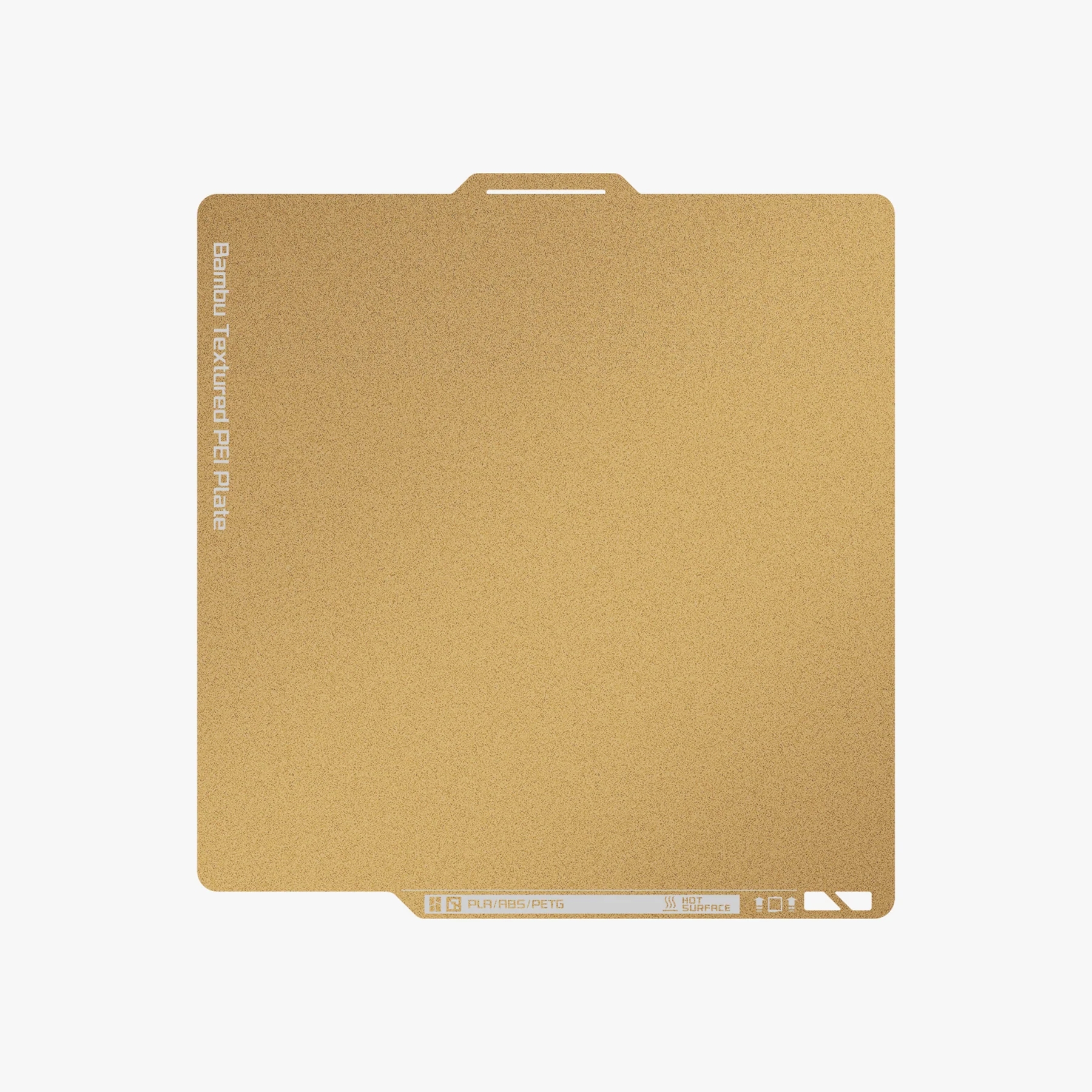
¶ Smooth PEI Plate
The Smooth PEI Plate is obtained by adhering a carefully selected PEI sheet to a spring steel using a highly heat-resistant 3M adhesive. The Smooth PEI Plate provides a flat surface for printed objects and is suitable for scenarios that require a level bottom surface.
The PEI sheet on the surface of the Smooth PEI Plate allows for printing with various filaments.
Only PLA filament does not require glue, while printing with other filaments requires the use of gluing to prevent the PEI sheet from tearing.
The thicker 0.5 mm spring steel helps reduce the risk of warping in the printing plate.
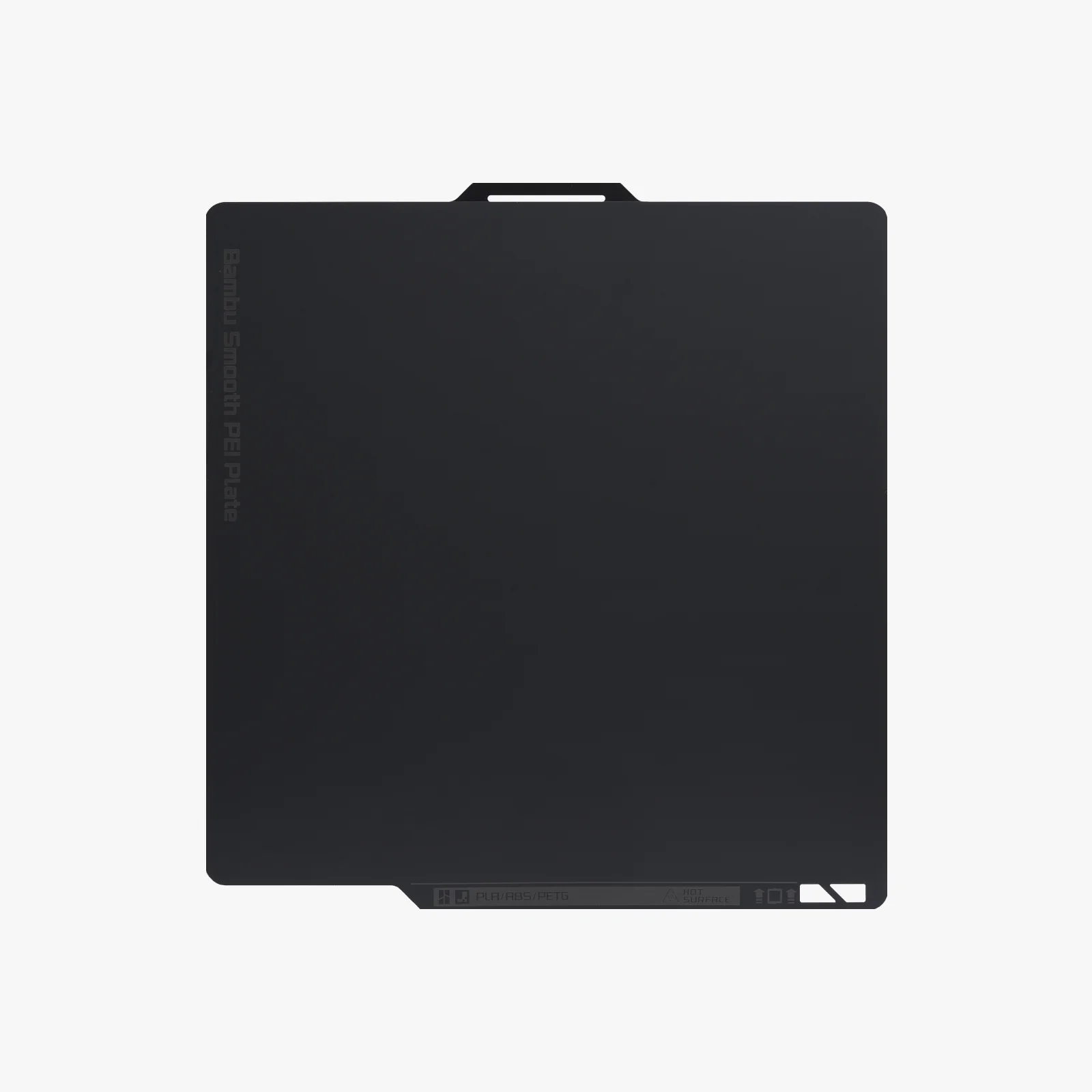
¶ Dual-Texture PEI Plate
The stainless steel plate is equipped with dual-sided coatings, one side featuring textured PEI and the other side featuring smooth PEI. Users can choose between different surface textures, allowing the model's bottom surface to have either a matte or smooth finish, providing more printing options.
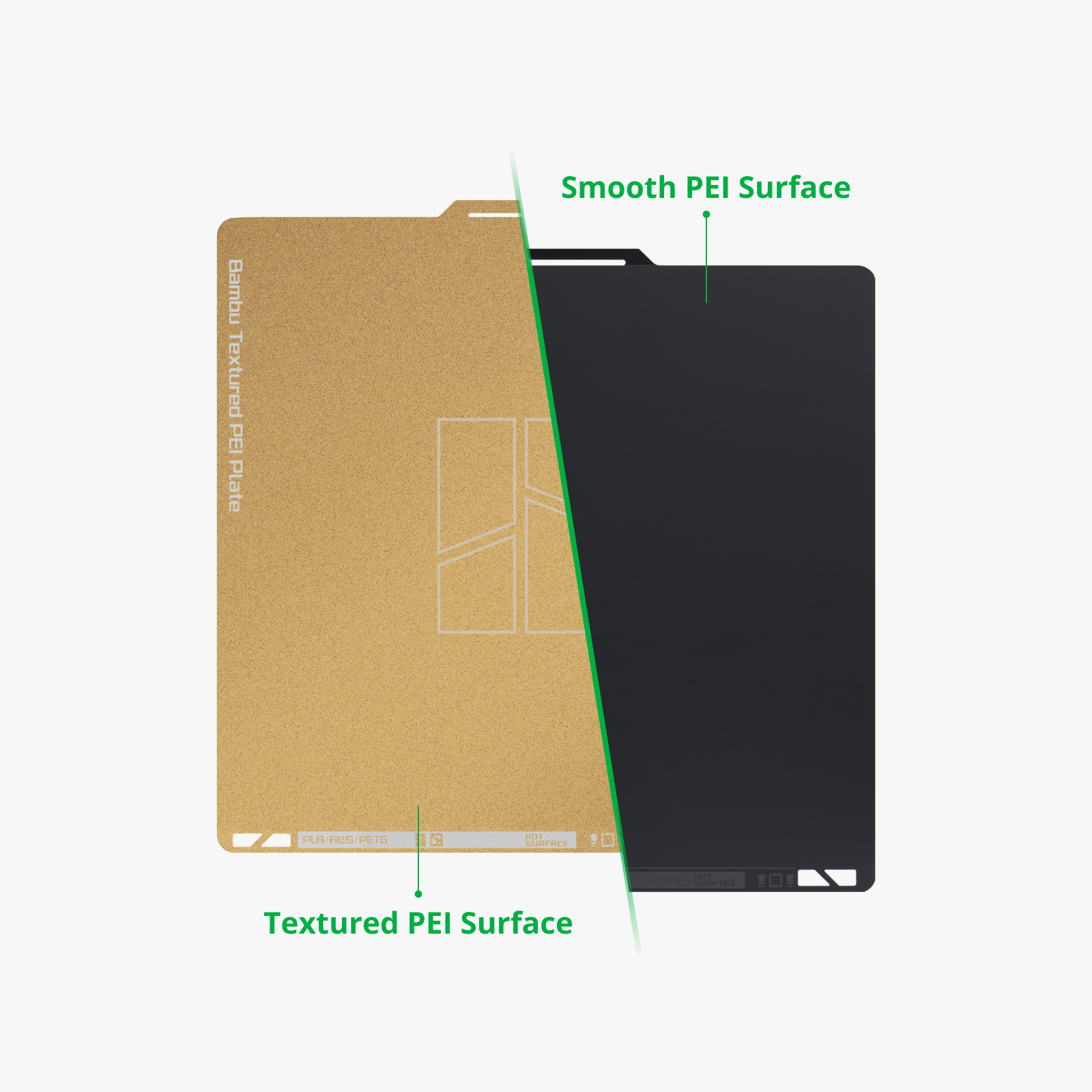
¶ Cool Plate SuperTack
The low-temperature stabilization print bed is made by spraying SuperTack on a spring steel plate, suitable for PLA and PETG filaments.
It can firmly hold the model at a low heated bed temperature of 45°C when printing PLA, effectively reducing warping and issues like "face lifting," especially when printing large models, significantly lowering the risk of warping. The stabilization coating is highly durable, with adhesion strength dropping by less than 20% after 300 prints, greatly extending the print bed's lifespan. Additionally, the coating significantly reduces the energy required for heating the bed, lowering electricity costs and making it more environmentally friendly.
Note: This plate is not suitable for printing with TPU filament, as it may damage the coating.
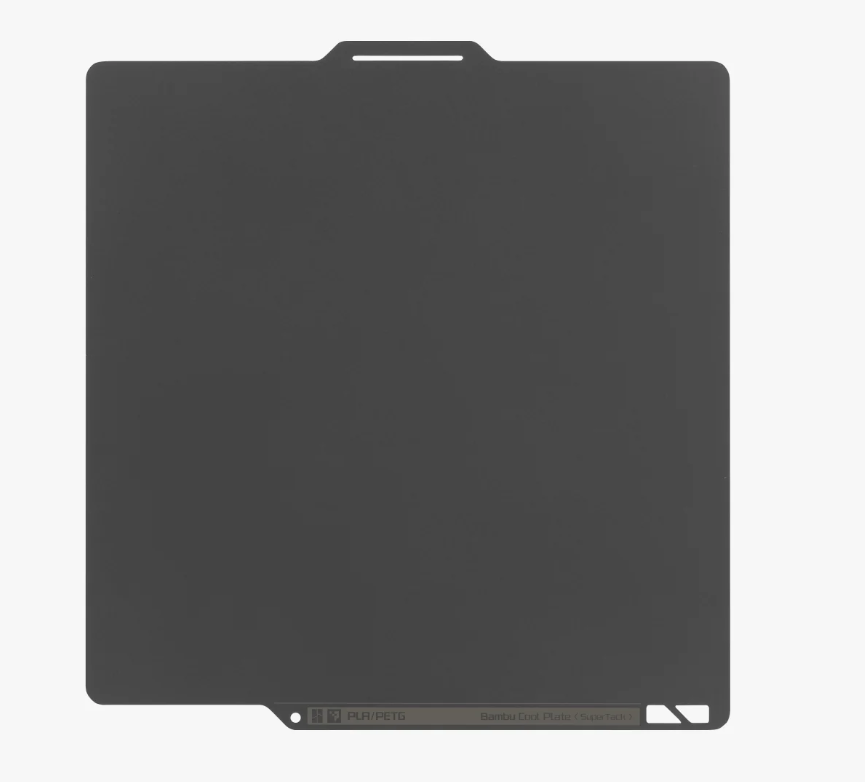
¶ 3D Effect Sheet
Using laser technology, fine optical textures are formed on the surface of the film, imparting optical properties such as increased transmittance, reflection, and polarization. During the printing process, the high-temperature polymer flows into these textures, transferring them to the bottom surface of the printed model. Depending on the angle of the light, the model's bottom surface displays different color effects. Currently, four patterns are available for selection: diamond, starry, galaxy, and carbon fiber.
Note: Due to the reflective effect of the transfer film, the X1 series laser lidar calibration will not function properly when using it.
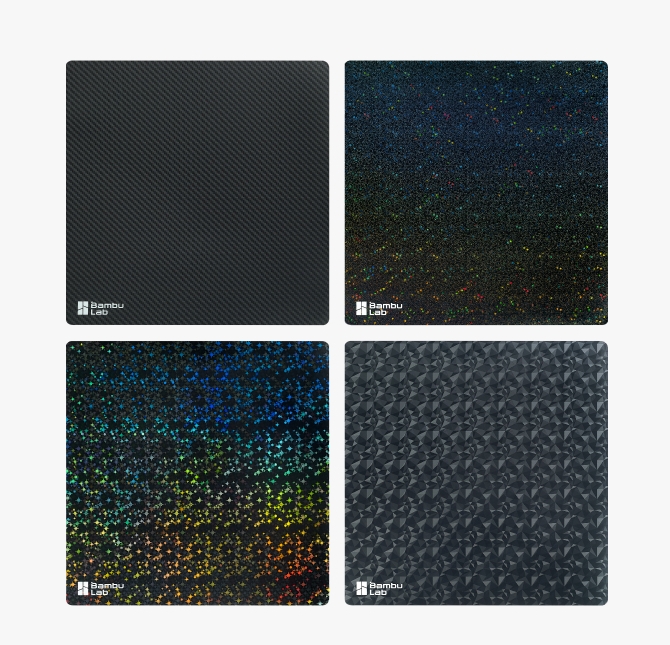 、
、

¶ Wipe zone on the build plate
Before printing, there may be some filament residue remaining on the nozzle, and if not cleaned, it can cause surface defects on the printed object. Therefore, the nozzle is first wiped on a nozzle wiper before printing starts and then repeatedly wiped in a specific area on the build plate (wipe zone). This helps to clean the filament residue on the nozzle and stabilize the chamber pressure inside the nozzle. This prevents surface defects on the printed object due to filament residue on the nozzle.
For the X1C, P1S/P1P, and A1 printers, as the nozzle comes into direct contact with the build plate, there may be some "wear" observed in the wiping zone (as shown in the image below). However, this phenomenon does not affect the functionality of the nozzle or the build plate.
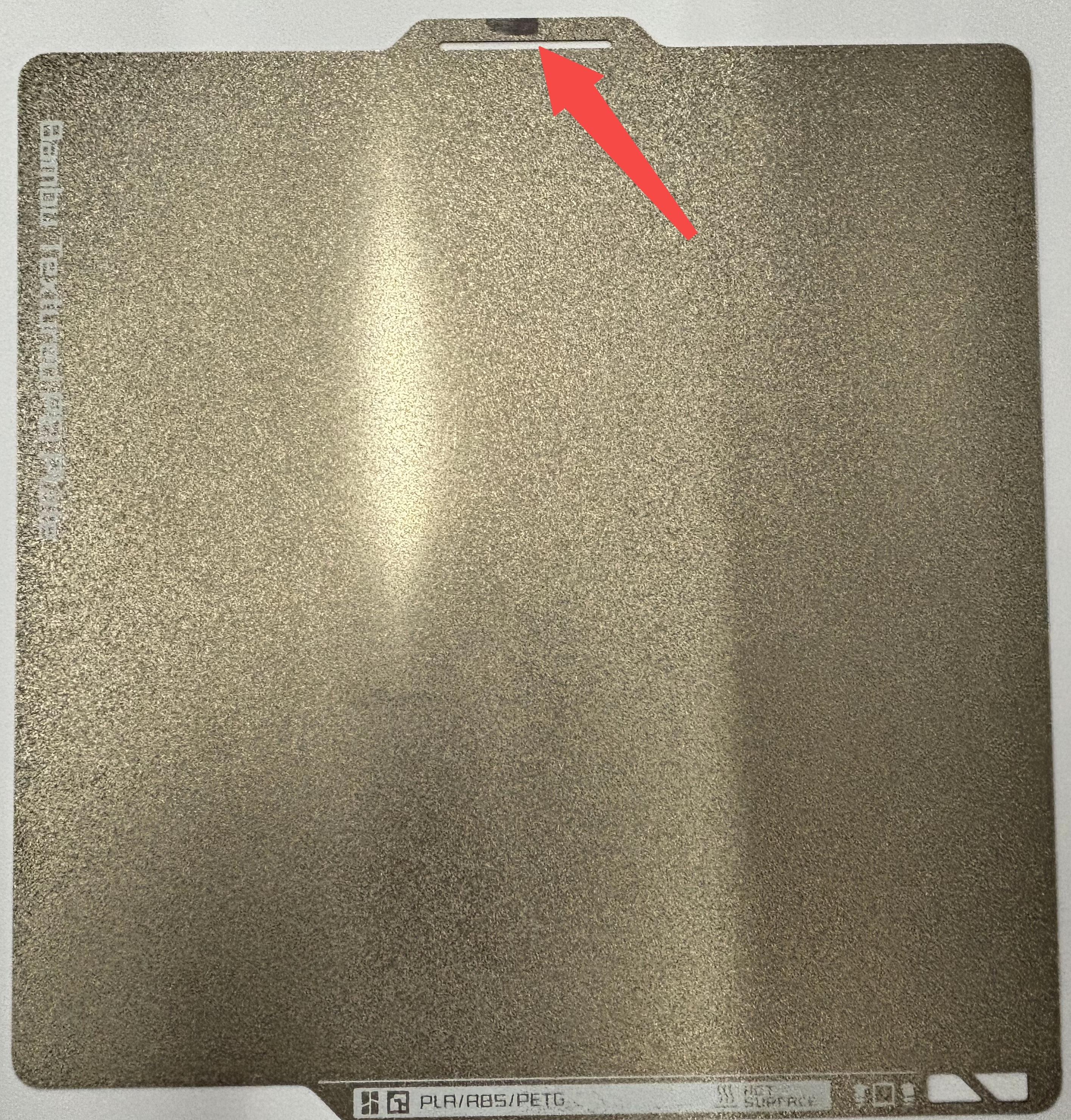
For the A1 mini printer, there is a wipe zone on the heatbed to clean the nozzle. Therefore, the phenomenon of "wear" on the build plate will not happen.

¶ Summary
For the correct gluing procedure, please check How to Use Bambu Lab Glue. Ensure that the print adheres properly to the plate without causing damage to the surface by sticking too tightly. Otherwise, the sheet may bubble or crack. Also, third-party glues are strongly discouraged and may damage the plate.
Alternatively, we provide textured PEI Plates that allow you to print without the need for a glue stick.
If you want to learn more about the compatibility and parameter settings for different filaments, plates, and glues, please check out: Filament Guide.